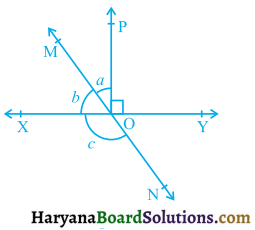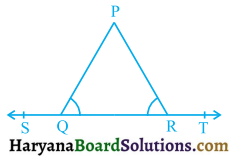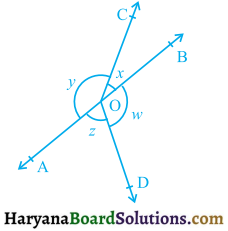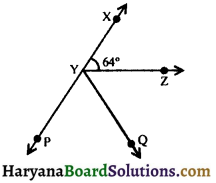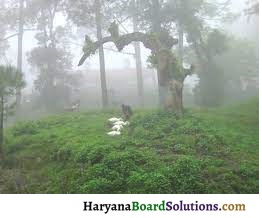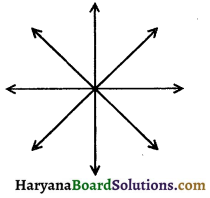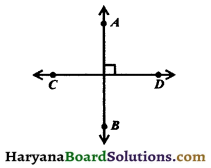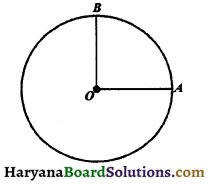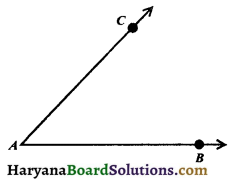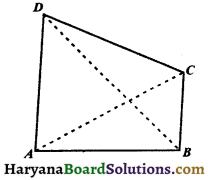Haryana State Board HBSE 8th Class English Solutions Honeydew Chapter 9 The Great Stone Face 1 Textbook Exercise Questions and Answers.
Haryana Board 8th Class English Solutions Honeydew Chapter 9 The Great Stone Face 1
HBSE 8th Class English The Great Stone Face 1 Textbook Questions and Answers
Comprehension Check
The Great Stone Face 1 Summary In Hindi HBSE 8th Class
Write ‘True’ or ‘False’ against each of the following statements:
1. The Great Stone Face stood near where Ernest and his mother lived.
2. One would clearly distinguish the features of the Stone Face only from a distance.
3. Ernest loved his mother and helped her in her work.
4. Though not very rich, Gathergold was skilful merchant.
5. Gathergold died in poverty and neglect.
6. The Great Stone Face seemed to suggest that Ernest should not fear the general.
Answer:
1. False
2. True
3. True
4. False
5. True
6. True.

Working With The Text
Answer the following questions:
The Great Stone Face 1 Summary HBSE 8th Class Question 1.
(i) What was the Great Stone Face?
महान वज्रमुख क्या था?
Answer:
The Great Stone Face was a rocky mountain that appeared above a valley. It had the resemblance of simply a few stone pieces joined together.
(ii) What did young Ernest wish when he gazed at it?
Answer:
The young Ernest wished that it (The Great Stone Face) could speak because it appeared so very kindly that its voice must be pleasant. He further desired that if he ever saw a man with such a face, he should love him dearly.
The Great Stone Face 1 HBSE 8th Class Question 2.
What was the story attributed to the Stone Face?
वज्रमुख से कौन सी कहानी जुड़ी हुई थी?
Answer:
The story was that, some day, a child would be born whose face would resemble the Great Stone Face when in manhood.
The Great Stone Face Summary 8th Class HBSE Question 3.
What gave the people of the valley the idea that the prophecy was about to come true for the first time?
किस बात से घाटी के लोगों के मन में यह विचार उत्पन्न हुआ कि भविष्यवाणी पहली बार ही सत्य होने वाली है?
Answer:
A rumour spread out in the valley that the great man, who looked like the Great Stone Face had appeared at last for the first time. It appeared that long long ago a young man had gone out of the valley to live at a sea port. The man’s name was Gathergold.
Question 4.
(i) Did Ernest see in Gathergold the likeness of the Stone Face?
Answer:
No, he didn’t. He only heard a voice from the Great Stone Face. The voice assured him not to feel afraid of any one. The Stone Face appeared to be saying that so much a man will come certainly. He should not feel afraid.

(ii) Who did he confide in and how was he proved right?
उसने किसको अपना रहस्य बताया और वह यह सत्य कैसे सिद्ध हुआ?
Answer:
He turned away his face sadly from the gaze of Mr. Gathergold and looked up the valley. Here the Stone Face appeared to tell him. “He will come! Fear not Ernest… the man will come one day.” It means that Ernest had lull confidence in the Great Stone Face who told him the fact. He told him that Gathergold was not the man whom they spoke of And after Gathergold’s, death this fact had proved right that was not the man he required!
Question 5.
(i) What made people believe General Blood-and-Thunder was their man?
किस बात ने लोगों में यह विश्वास उत्पन्न किया कि जनरल ब्लड-तथा-थंडर ही उनका व्यक्ति था?
Answer:
It so happened that another man who was born in the valley, had become a soldier and after great many battles had reached the position of commander entitled Blood-and-Thunder. After getting tired he had wanted to go back and live in the valley during the last years of life. The people of the valley wanted to welcome by holding a great festival. They felt that this General resembled the Stone Face The festival was held in great excitement. Ernest also reached the I festival spot. He was successful in seeing his face. Ernest could not recognise it. So, he felt that the man (Blood and Thunder) was not the man they wanted. The Stone Face also appeared to whisper in his ears that “not fear Ernest, he will come.”
(ii) Ernest compared the man’s face with the Stone Face. What did he conclude?
अर्नस्ट ने उस व्यक्ति के चेहरे की महान वज्रमुख से तुलना की। उसने क्या निष्कर्ष निकाला?
Answer:
Ernest looked at the General’s face and at the same side he saw the Stone Face. However, he could not recognise it because it was different. So he concluded that the general too was not the man whose face resembled the Stone Face.
Working With Language
Question 1.
Look at the following words :
like – likeness
punctual – punctuality
The words on the left are adjectives and those on the right are their noun forms.
Write the noun forms of the following words by adding-ness or – ity to them appropriately. Check the spelling of the new words.
(i) lofty ……………., (ii) able ……………., (iii) happy ……………., (iv) near ……………., (v) noble ……………., (vi) enormous ……………., (vii) pleasant ……………., (viii) dense ……………., (ix) great ……………., (x) stable …………….,
Answer:
(i) loftiness
(ii) ability
(iii) happiness
(iv) nearness
(v) nobility
(vi) enormity
(vii) pleasantness
(viii) density
(ix) greatness
(x) stability
Question 2.
Add -ly to each of the following adjectives, then use them to fill in the blanks.
perfect – near – kind – pleasant – eager
(i) Why didn’t you turn up at the meeting?
We all were …………. waiting for you.
(ii) …………. write your name and address in capital letters.
(iii) I was …………. surprised to see him at the railway station. I thought he was not coming.
(iv) It is …………. believable that I am not responsible for this mess.
(v) He fell over the step and …………. broke his arm.
Answer:
(i) eagerly
(ii) Kindly
(iii) pleasantly
(iv) perfectly
(v) nearly.
Question 3.
Complete each sentence below using the appropriate forms of the verbs in brackets.
(i) I …………. (phone) you when I …………. (get) home from school.
(ii) Hurry up ! Madam …………. (be) annoyed if we …………. (be) late.
(iii) If it …………. (rain) today, we …………. (not) go to the play.
(iv) When you …………. (see) Mandal again, you …………. (not/recognise) him. He is growing a beard.
(v) We are off today. We …………. (write) to you after we …………. (be) back.
Answer:
(i) will phone, get
(ii) will be, are
(iii) rains, will not
(iv) see, will not recognise
(v) will write, are

Speaking and Writing
Question 1.
Imagine you are Ernest. Narrate the story that his mother told him. Begin like this.
My mother and I were sitting at the door of our cottage. We were looking at the Great Stone Face. I asked her if she had ever seen any one who looked like the Stone Face. Then she told me this story.
Answer:
My mother and I were sitting at the door of our cottage. We were looking at the Great Stone Face. I asked her if she had ever seen anyone who looked like the Stone Face. Then she told me this story, that at some future day, a child should be born near here, who was destined to become the greatest and noblest person of his time and whose face, in manhood, should bear Em exact resemblance to the Great Stone Face. Now the people of our valley still had faith in this old prophecy. But some of them took it to be nothing but idle talk. At all events, the great man of the prophecy had not yet appeared Emd we are still waiting for him eagerly.
Question 2.
Imagine you are Gathergold. Write briefly the incident of your return to the valley.
Begin like this : My name is Gathergold. I left the valley of the Great Stone Face fifty years ago. I am now going back home. Will the people of the valley welcome me? Do they know that I am very rich?
Answer:
My name is Gathergold. I left the valley of the Great Stone Face fifty years ago. I am now going back home. Will the people of the valley welcome me? Do they know that I am very rich? I have reached at my native valley. But, what is this? Why are they shouting, “The Great man has returned?” Oh! perhaps, they are thinking about that old prophecy. They consider me as the Great Stone Face. There was a rumour in the valley that I was to bear a resemblance to the Great Stone Face. I am greatly excited. They all welcomed me. I was excited as well as puzzled, “what-to do”! Above all, I enjoyed the great welcome to my native valley.
The Great Stone Face 1 Passages for Comprehension
Read the passages carefully and answer the questions that follow:
Passage – 1
The Great Stone Face was a work of nature, formed on the perpendicular side of a mountain by some immense rocks, which had been thrown together so that, when viewed at a proper distance, they resembled the features of a human face. If the spectator approached too near, he lost the outline of the enormous face and could see only a heap of gigantic rocks, piled one upon another. But seen hum a distance, the clouds clustering about it, the Great Stone Face seemed positively to be alive.
Questions:
(i) From which lesson has the above passage been taken? Who is the writer of these lines?
(ii) How was the Great Stone Face a work, of nature?
(iii) What was particularly attractive towards this place?
(iv) What did the spectator see if he saw the Grand Stone Face from a distance as well as from nearby?
(v) Write the noun form of resemble, seen.
Answers:
(i) This passage has been taken from the lesson “The Great Stone Face” written by Nathaniel Hawthorne.
(ii) The Grand Stone Face was a work of nature because it was located among the range of high mountains near a wide valley on a rock. It was beautiful in all respects.
(iii) The Great Stone Face was a rock. It resembled the features of a human face.
(iv) The spectator looked at the Great Stone from the distance as wpll as nearby. From nearby, he found it a few stones joined together but from distance the peak of the mountain appeared of like a human face.
(v) resemblance, sight.
Passage – 2
About this time there went a rumour throughout the valley that the great man, who was to bear a resemblance to the Great Stone Face, had appeared at last. It seems that, many years before, a young man had left the valley and settled at a distant seaport. Gathergold, which was his name, had set up as a shopkeeper and, being sharp in business matters, had become so very rich that it would have taken him a hundred years only to count his wealth. In time he thought of his native valley, and decided to go back there, and end his days where he had been bom.
Questions:
(i) What time does this line point to?
(ii) What was the rumour that went throughout the valley?
(iii) Which was the expected great man’s birth place?
(iv) Where had the young great man settled after leaving the valley? What did he do there?
(v) Find out the words from the passage which are opposites of: near, disappeared.
Answers:
(i) This lines points to. the time when a rumour spread in the valley.
(ii) A rumour spread all over the valley that the great man who resembled the Great Stone Face, had appeared.
(iii) The expected great man’s native place was the valley of Great Stone Face which he had left many years ago.
(iv) The young great man had settled at a distant seaport after leaving the valley and set up a shop there.
(v) Near-distant Disappeared – appeared.

The Great Stone Face 1 Translation in Hindi
Before You Read
Seen from a distance, hilltops and huge rocks seem to assume various shapes. They may resemble an animal or a human figure. People attribute stories to these shapes. Some stories come true, others don’t. The Great Stone Face is one such shape that reminds the inhabitants of the valley of a prophecy. What was it? Did it come true?
Word Meaning : Distance : (दूरी), Hilltops : (पहाड़ियाँ), Huge : big = (बड़ी), Seem : appear = (प्रतीत होती है), Assume : adopt = (अपनाना), Various : different = (विभिन्न), Resemble : take after = (समानता), Figure:physical shape = (चित्र),Assume : (कल्पना), Reminds : (याद दिलाना);Inhabitants : residents =(निवासी), Valley : (घाटी), Prophecy :future-telling = (भविष्यवाणी)।
दूर से देखने पर, पहाड़ियों की चोटियाँ तथा बड़ी-बड़ी चट्टानें विभिन्न आकारों का रूप अपनाती प्रतीत होती हैं। उनका आकार तथा रूप पशुओं और मनुष्य शरीर से मेल खा सकता है। लोग इन आकारों से कहानियाँ जोड़ देते है। कुछ कहानियाँ सत्य हो जाती हैं और कुछ नहीं होती। महान वज्रमुख एक ऐसा आकार है जो घाटी के निवासियों को भविष्यवाणी का स्मरण कराता है। यह भविष्यवाणी क्या थी? क्या यह सत्य हुई?
1. One afternoon, when the sun was going down, a mother and her little boy sat at the door of their cottage, talking about the Great Stone Face. They had only to lift their eyes and there it was, plain to be seen, though miles away, with the sunshine brightening all its features.
Word Meaning: Cottage: hut = (agfeet), Lift : raise, pick up = (3014), Features : qualities = (विशेषताएँ), Brightening : (प्रकाशित करने वाली)।
एक दोपहर पश्चात् शाम को जब सूर्य अस्त हो रहा था एक माँ और उसका छोटा बेटा अपनी कुटिया के द्वार पर बैठे महान वज्रमुख के प्रति बातें कर रहे थे। उन्हें केवल अपनी आँख ऊपर उठानी पड़ी और स्पष्ट देखा जा सकता था, कई मील दूर सूर्य की चमक के साथ-साथ, इसके सभी चित्र (विशेषताएँ) देखे जा सकते थे।
2. And what was the Great Stone Face?
The Great Stone Face was a work of nature, formed on the perpendicular side of a mountain by some immense rocks, which had been thrown together so that, when viewed at a proper distance, they resembled the features of a human face. If the spectator approached too near, he lost the outline of the endrmous face and could see only a heap of gigantic rocks, piled one upon another. But seen from a distance, the clouds clustering about it, the Great Stone Face seemed positively to be alive.
Word Meaning : Immense : thick = (घना), Spectator : viewer = (दर्शक), Seemed : looked = (प्रतीत हुआ)।
और यह महान वज्रमुख क्या था?
महान वज्रमुख एक प्राकृतिक कृति था जो बड़ी-बड़ी चट्टानों के साथ एक पर्वत के पास ऐसी स्थिति में फेंका गया था कि उसका आकार एक मनुष्य के चेहरे से मेल खाता था। यदि दर्शक बहुत निकट आ जाता तो वह उस बड़े मानवीय महान चेहरे की रेखाएँ खो बैठता था। तब उसे केवल विशालकाय चट्टान का ढेर ही दिखाई देता था। परंतु एक दूरी से देखने पर, झुंड बनाते बादलों से घिरा महान वज्रमुख संभवतः सजीव लगा।
3. It was the belief of many people that the valley owed much of its fertility to the benign face that was continually beaming over it.
Word Meaning : Belief : faith = (विश्वास),Valley: ravine = (घाटी)।
यह अनेक लोगों का विश्वास था कि घाटी को अपनी समृद्धता उसी समृद्ध चेहरे से प्राप्त हुई है जो निरंतर उस पर दमक रहा है।
4. A mother and her little boy, as we said earlier, sat at the door of their cottage, gazing at the Great Stone Face and talking about it. The child’s name was Ernest.
Word Meaning : Little : Small = (छोटा), Earlier : Before = (पहले), Cottage: Hut = (झोपड़ी),. Gazing : Starving = (घूरते हुए)।
जैसा हमने पहले कहा, एक माँ और उसका छोटा लड़का अपनी छोटी कुटिया के द्वार पर महान वज्रमुख पर गहरी दृष्टि से देखते हुए इसके बारे में बात कर रहे थे। बालक का नाम अर्नस्ट था।

5. “Mother,” said he, while the Great Face smiled on him, “I wish that it could speak, for it looks so very kindly that its voice must indeed be pleasant. If I ever see a man with such a face, I should love him very much.”
Word Meaning : Indeed : Really = (वास्तव में),Pleasant: Happy = (सुखद)।
“माँ” उसने कहा, जब बड़ा मुख उस पर मुस्कुराया, “काश। यह बोल सकता। क्योंकि यह बहुत दया से देखता हुआ प्रतीत होता था। इसकी आवाज निस्संदेह बहुत ही सुखदायक होगी। यदि मैं इस प्रकार के मुख वाले व्यक्ति को देख लूँ तो मैं उसे बहुत-बहुत प्यार करूँ।
6. “If an old prophecy should come to pass,” answered his mother, “we may see a man some . time, with exactly such a face as that.”
“What prophecy do you mean, dear Mother?” eageriy inquired Ernest. “Please tell me about it.”
Word Meaning : Exactly : correctly = (ठीक-ठीक),Mean:the meaning of = (का अर्थ । आशय है)। Prophecy : Foretelling = (भविष्यवाणी)।
“यदि एक पुरानी भविष्यवाणी सच्ची हो जाए,” माँ ने उत्तर दिया “हम एक व्यक्ति को देख लें जिसका चेहरा ठीक वैसा ही है जैसा वह है।”
“कौन सी भविष्यवाणी है, माँ” अर्नस्ट ने उत्सुकता से पूछा। “कृपया इसके बारे में मुझे बताओ माँ”।
7. So his mother told him a story that her own mother had told her, when she herself was younger than little Ernest; that, at some future day, a child should be born near here, who was destined to become the greatest and noblest person of his time and whose face, in manhood, should bear an exact resemblance to the Great Stone Face. Many still had faith in this old prophecy. But others took it to be nothing but idle talk. At all events the great man of the prophecy had not yet appeared.
Word Meaning : Manhood : humanity = (मानवता), Idle: Worthless = (बेकार), Resemblance: to look like something = (सादृश प्रतीत होना)।
इसलिए उसकी माँ ने उसे एक कहानी सुनाई जो उसे उसकी खुद की माँ ने सुनाई थी, जब वह स्वयं छोटे अर्नेस्ट से भी छोटी थी। किसी दिन भविष्य में किसी बालक को इस स्थान के निकट जन्म लेना चाहिए जो अपने समय का अत्यंत सज्जन तथा महानतम व्यक्ति बने और जिसका चेहरा मानव जाति में इस महान वज्रमुख से ठीक-ठीक मेल खाए। लोग प्रतीक्षा करने लगे थे और देखते रहे थे परंतु ऐसे चेहरे जैसा उन्होंने कोई नहीं देखा था। कई लोग अभी तक इस भविष्यवाणी में विश्वास रखते थे। पर अन्य इसे बेकार की बात मानते थे। सभी अवसरों पर भविष्यवाणी का आदमी अब तक प्रस्तुत (प्रकट) नहीं हुआ था।
8.“O, Mother,” cried Ernest, clapping his hands above his head, “I do hope that I shall live to see him!”
His mother was an affectionate and thoughtful woman. It was proper, she thought, not to discourage the fanciful hopes of her little boy. So she said to him, “Perhaps you may.”
Word Meaning : Fanciful : thoughful = (विचारपूर्ण), Affectionate : dear = (प्रिय), Fanciful : Assumed = (कल्पित)।
“ओ माँ,” अर्नस्ट चिल्लाया, “मुझे अवश्य यह आशा है कि मैं उसे देखने के लिए जीऊँगा।”
उसकी माँ बहुत स्नेहयुक्त स्वभाव वाली तथा विचारवान महिला थी। उसने सोचा कि इस छोटे बालक की कल्पना से भरी आशाओं को निरुत्साहित करना ठीक नहीं है। अतः उसने उस बालक को कहा, “संभवतः तुम देख सकते हो।”
9. And Ernest never forgot the story that his mother told him. It was always in his mind · whenever he looked upon the Great Stone Face. He spent his childhood in the log-cottage where he was born, was dutiful to his mother and helpful to her in many things, assisting her much with his little hands, and more with his loving heart. In this manner, from a happy yet often pensive child he grew up to be a mild and quiet youth.
Word Meaning : Mind : heart = (हृदय), Valley : locality in the centre of hills = (घाटी), Childhood : (बचपन), Grew up: (बड़ा हुआ), Quiet: silent natured = (मौन, शांत स्वभाव का), Pensive: thoughtful = (चिन्ताग्रस्त)।
और अर्नस्ट कभी वह कहानी भूल नहीं पाया जो उसकी माँ ने उसे सुनाई थी। यह सदा उसके मन में रहती थी जब भी वह उस महान वज्रमुख को देखता था। उसका सारा बचपन लकड़ी की झोपड़ी जहाँ वह पैदा हुआ, अपनी माँ के प्रति कर्तव्यपरायणता में व्यतीत हुआ और अपने छोटे-छोटे हाथों तथा प्यारे हृदय से अपनी माँ की घरेलू कार्य में सहायता करता था। इस विधि से वह एक प्रसन्न फिर भी चिन्ताग्रस्त बालक से बड़ा होकर एक विनम्र व शांत युवक बन गया।
10. Ernest had no teacher, but the Great Stone Face became one to him. When the work of the day was over, he would gaze at it for hours, until he began to imagine that those vast features recognised him, and gave him a smile of kindness and encouragement.
Word Meaning : Until : Till = (जब तक), Imagine : to assume = (कल्पना करना), Encouragement : Motivation = (प्रोत्साहन)।
अर्नस्ट का कोई शिक्षक नहीं था किंतु महान वज्रमुख उनमें से एक था। जब दिन का कार्य समाप्त हो जाता था तो इसे घंटों घूरता रहता था, तब तक जब तक कि वह व्यापक विशेषताओं की कल्पना को स्वीकार नहीं करता और उसे एक दयापूर्ण मुस्कान तथा प्रोत्साहन नहीं मिल जाता।
11. About this time there went a rumour throughout the valley that the great man, who was to bear a resemblance to the Great Stone Face, had appeared at last. It seems that, many years before, a young man had left the valley and settled at a distant seaport.
Word Meaning : Rumor : public opinion = (अफवाह, किवदन्ती), Throughout : all over = (सब जगह), Appeared: show himself = (प्रकट होना), Settled : started living = (रहने लगा), Distant:far = (दूर), Seaport : place where ship stationed on the sea bank = (समुद्र के किनारे जहाज के ठहरने का स्थान)।
लगभग इसी समय, वहाँ एक अफवाह सारी घाटी में फैल गई कि एक महान व्यक्ति जो महान वज्रमुख जैसा लगता था। अंततः प्रकट हो गया है। ऐसा लगता है कि कई वर्ष पूर्व, एक युवक घाटी को छोड़कर एक सुदूर बंदरगाह पर बस गया था। ..
12. Gathergold, which was his name, had set up as a shopkeeper and, being sharp in business matters, had become so very rich that it would have taken him a hundred years only to count his wealth. In time he thought of his native valley, and decided to go back there, and end his days where he had been born.
Word Meaning : Sharp: fine / expert = (निपुण),Native : one’s own birth place = (जन्मभूमि)।
गैदरगोल्ड, जो कि उसका नाम था, एक दुकानदार के रूप में भी स्थापित हो चुका था और व्यापारिक मामलों में चुस्त होने के कारण, इतना अमीर हो चुका था कि उसे अपना धन गिनने में सौ वर्षों का समय लग जाता। उस समय उसे अपनी घाटी की याद आई और वहाँ वापिस जाने का निश्चय किया और अपना अंतिम समय वहीं बिताने की सोची जहाँ उसका जन्म हुआ।

13. Ernest had been deeply stirred by the idea that the great man, the noble man, the man of prophecy, after so many ages of delay, was at length to be seen in his native valley. While the boy was still gazing up the valley one day and imagining that the Great Stone Face returned his gaze, the noise of wheels was heard, and a crowd of people cried. “Here comes the great Mr Gathergold.”
A carriage, drawn by four horses, dashed round the turn of the road. Within it, thrust partly out of the window appeared the face of an old man with yellow skin.
“The very image of the Great Stone Face!” shouted the people. “Sure enough, the old prophecy is true. Here we have the great man, at last!”
Word Meaning:Noble:ideal = (आदर्श),Ages : many years = (युग/कई वर्षों का समय), Gaze: stare = (एकटक देखना), Drawn : to pull = (खींचना), Shouted : cried = (चिल्लाए)।
अर्नस्ट इस विचार से अति उत्साहित हो गया कि महान व्यक्ति, आदर्श व्यक्ति, भविष्यवाणी का व्यक्ति, इतने युगों की देरी के बाद, उसकी अपनी घाटी में कुछ पलों में दिखाई देने वाला है। जबकि एक दिन लड़का अभी तक घाटी में घूर रहा था और कल्पना कर रहा था कि महान वज्रमुख उसे वापस घूर रहा था, पहियों की आवाज सुनाई दी और लोगों की भीड़ चिल्लाई, “ये आ गए महान मि. गेदरगोल्ड।”
चार घोड़ों द्वारा खींची जाने वाली एक गाड़ी सड़क के मोड़ पर तेजी से आगे दौड़ी। उसमें से, खिड़की में से एक पीली त्वचा वाले वृद्ध व्यक्ति का चेहरा कुछ बाहर निकला।
“महान वज्रमुख का प्रतिबिम्ब है ये!” लोग चिल्लाए। “वाकई में, पुरानी भविष्यवाणी सत्य है। यहाँ हमारे सामने महान व्यक्ति है, अन्ततः!”
14. And, what greatly puzzled Ernest, they seemed actually to believe that here was the likeness which they spoke of. He turned away sadly from the wrinkled shrewdness of that unpleasant face, and gazed up the valley, where the Stone Face seemed to say: He will come! Fear not, Ernest; the man will come!
Word Meaning : Puzzled : disturbed = (घबराहट उत्पन्न कर दी), Actually : really, believe = (विश्वास करना), Seemed : trust = (प्रतीत होता था)।
और जो बात अर्नस्ट को अधिक घबराहट दे रही थी वह यह कि वे लोग वास्तव में ही विश्वास करते प्रतीत हो रहे थे कि यहाँ ही वह समानता है जिसके प्रति वे बातें करते रहते थे। वह उस बेरुखे झुरींदार चेहरे की चतुराई से उदास होकर मुड़ा और घाटी के ऊपर दृष्टि डाली जहाँ वज्रमुख कहता प्रतीत होता था-वह आएगा! डरो मत, अर्नस्ट; वह व्यक्ति आएगा!
15. The years went on, and Ernest grew to be a young man. He attracted little notice from the inhabitants of the valley. They saw nothing remarkable in his way of life, except that, when the labour of the day was over, he still loved to gaze upon the Great Stone Face. Their idea was that this was a folly, but pardonable, because Ernest was industrious, kind and neighbourly.
They did not know that the Great Stone Face had become a teacher to him, and that the sentiment which was expressed in it would enlarge the young man’s heart, and fill it with deeper sympathies than other hearts. They did not know that from this would come a better wisdom than could be learnt from books.
Neither did Ernest know that the thoughts which came to him so naturally, in the fields and at the fireside, were of a higher tone than those which all men shared with him. A simple soul simple as when his mother first told him the old story he beheld the marvellous face looking down the valley, and still wondered, why its human likeness was so long in coming.
Word Meaning : Wondered : surprised = (चकित हो गया), Soul: (आत्मा), Beheld : saw = (देखा), Marvellous: wonderful = (आश्चर्यजनक), Still : even then = (फिर भी)।
कई वर्ष बीत गए, और अर्नस्ट एक युवक बन गया था। घाटी के लोगों द्वारा उसकी ओर कम ही ध्यान आकर्षित किया जाता .. था। उन्होंने उसकी जीवन-शैली में कुछ भी ध्यान देने योग्य नहीं देखा, सिवाय इसके कि जब भी दिन का काम खत्म हो जाता था, वह अभी तक महान वज्रमुख को निहारना पसंद करता था। उनका विचार था कि यह एक मूर्खता थी, परंतु क्षमायोग्य, क्योंकि अर्नस्ट मेहनती, दयालु और पड़ोसी-धर्म निभाने वाला था। वे नहीं जानते थे कि महान वज्रमुख उसका शिक्षक बन गया था।
और जो भाव उसमें व्यक्त किया गया था, उसने युवक का हृदय बड़ा कर दिया था और दूसरों के हृदयों के प्रति उसमें सहानुभूति भर दी थी। वे नहीं जानते थे कि इसे अधिक बुद्धिमता आएगी जितनी किताबों से नहीं सीखी जा सकती थी। न ही अर्नस्ट जानता था कि जो विचार उसमें प्राकृतिक रूप से आए हैं-खेतों में, आग के किनारे, वे उनसे अधिक ऊँची लय के हैं जो उसे अन्य व्यक्तियों ने बताए। एक साधारण आत्मा, वैसा साधारण जैसा वह था, जब उसकी माँ ने उसे पुरानी कहानी सुनाई थी। उसने वह बढ़िया मुख देखा जो घाटी की ओर नीचे देख रहा था। वह अब भी चकित हो रहा था कि इसकी मानवीय समानता ने क्यों आने में अधिक समय लगा दिया है।

16. By this time poor Mr Gathergold was dead and buried. His wealth, which was the body and spirit of his existence, had disappeared before his death. Since the melting away of his gold, it had been generally agreed that there was no great likeness, after all, between the ruined merchant and the majestic face upon the mountain.
Word Meaning: Melting away:dissolving = (घुल जाना),Buried:drug into the earth = (दफनाना), Generally: commonly = (सामान्यतः), Afterall : (क्यों न हो), Ruined : destroyed = (उजाड़ देना)।
बेचारे गैदरगोल्ड की मृत्यु हो गई थी और उसे मिट्टी में दबाया जा चुका था। उसकी संपत्ति, जो उसके अस्तित्व का शरीर तथा आत्मा थी, उसकी मृत्यु से पहले ही लुप्त हो गई थी जब से उसकी समृद्धि की स्थिति समाप्त हो गई थी। इस बात में सभी सहमत हो गए थे। क्यों न हो, उस उजड़े व्यापारी तथा पर्वत पर खड़े जादुई चेहरे के बीच कोई बहुत बड़ी समानता भी तो नहीं है।
17. It so happened that another son of the valley had become a soldier many years before. After a great deal of hard fighting, he was now a famous commander. He was known on the battlefield by the name of Blood-and-Thunder. Old and tired now, he had lately expressed a desire to return to his native valley.
Word Meaning : Happened : occurred = (घटित हुआ),Commander : (सेना अधिकारी), Lately : (बहुत देर के पश्चात्), Expressed : told = (अभिव्यक्त किया), Desire : want = (इच्छा), Native: belonging to the place of one’s birth = (स्थानीय, देशीय)। ऐसा हुआ कि घाटी का एक दूसरा बेटा बहुत वर्ष पहले सैनिक बन गया था। बहुत घमासान युद्ध के पश्चात् वह अब एक प्रसिद्ध कमांडर बन गया था। युद्ध के मैदान में उसका नाम रक्त और गरज कहा जाता था। वह अब वृद्ध तथा थका हुआ था। वह अब अपने घर घाटी में वापिस आने की इच्छा रखता था।
18. The inhabitants, his old neighbours and their grown up children, prepared to welcome the renowned commander. It was being said that at last the likeness of the Great Stone Face had actually appeared.
Word Meaning : Inhabitants : residents = (निवासी), Prepared : (तैयारी की)।
घाटी के निवासियों, उसके पुराने पड़ोसियों और युवा बच्चों ने उस प्रसिद्ध सैनिक का स्वागत करने का निश्चय किया। विशेषकर इसलिए क्योंकि कहा जा रहा था कि अंततः महान वज्रमुख की समानता वास्तव में मिल गई थी।
19. Great, therefore, was the excitement throughout the valley, and many people who had never once thought of glancing at the Great Stone Face now spent much time in gazing at it, for the sake of knowing exactly how General Blood-and-Thunder looked.
Word Meaning : Excitement:spirit = (उत्साह),Throughout all over = (सब जगह), Glancing: looking slantingly = (टेढ़ी दृष्टि से देखते हुए), For the sake of : (के लिए), Exactly:correctly = (ठीक-ठीक रूप से)।
अतः घाटी भर में उत्साह भरपूर था और बहुत से लोग जिन्होंने एक बार भी महान वज्रमुख पर दृष्टि नहीं डाली थी अब इस पर ध्यान से देखने के लिए बहुत समय व्यतीत करते थे और वह भी केवल यह जानने के लिए कि सेनापति रक्त तथा गरज कैसे दिखाई देते हैं।
20. On the day of the general’s arrival, Ernest and all the other people of the valley left their work, and proceeded to the spot where a great banquet had been prepared. Soldiers stood on guard, flags waved and the crowd roared. Ernest was standing too far back to see Blood-and-Thunder’s .face. However, he could hear several voices.
Word Meaning : Roard : cried hoarse = (जोर से चिल्लाया),Waved : stirred = (हिलाए), Several: many = (बहुत से), Arrival : visit = (पहुँचना), Proceeded : started = (ठीक चल पड़े), Spot : place = (स्थान), Festival : fair = (मेला), On guard : watchful = (पहरे पर)।
सेनापति के पहुंचने वाले दिवस पर अर्नस्ट तथा अन्य दूसरे लोगों ने काम छोड़ दिया और उस स्थान पर पहुँचे जहाँ पर महान समारोह होने वाला था। सैनिक, अंगरक्षक बनकर खड़े हो गए। झंडे लहराए जाने लगे और भीड़ गरजने लगी। अर्नस्ट बहुत दूर पीछे ब्लड तथा थंडर के चेहरे को देखने के लिए खड़ा हुआ था। हालाँकि वह बहुत सी आवाजें सुन सकता था।
21. “It’s the same face, exactly!” cried one man, dancing for joy. “Wonderfully like it, that’s a fact!” replied another. “And why not?” cried a third; “he’s the greatest man of this or any other age, beyond a doubt.”
Word Meaning : Fact : truth = (सत्य), Beyond a doubt : (कोई संदेह नहीं)।
“यह वही चेहरा है, ठीक ठीक वही!” खुशी से नाचता हुआ एक व्यक्ति चिल्लाया।
“विचित्र रूप से उस जैसा, यह पूर्णतः सत्य है!” दूसरे ने उत्तर दिया।
और तीसरा बोला, “और क्यों नहीं?, वह इस अथवा दूसरे युग का निस्संदेह सबसे बड़ा व्यक्ति है।”
22. Ernest at last could see the general’s face; and in the same glance, to the side, he could also see the Great Stone Face. If there was such a likeness as the crowd proclaimed, Ernest could not recognise it.
“Fear not, Ernest,” said his heart, as if the Great Stone Face was whispering to him, “fear not, Ernest; he will come.”
Word Meaning : Glance: look = (देखना),Proclaimed :announced = (घोषणा की), Recognized: knew in person = (पहचाना), Whispering : speaking very low = (धीरे बोलना)।
अर्नस्ट अंततः सेनापति चेहरे को देख सकता था। और एक ही झलक में एक ओर उस महान वज्रमुख को भी देख सकता था। यदि ऐसी ही समानता है जिस पर भीड़ दावा करती है तो अर्नस्ट इसे नहीं पहचान सकता था। “डरो मत अर्नस्ट,” उसके मन ने कहा, ऐसा लगता था जैसे महान चेहरा ही उसके कानों में कह रहा हो; “डरो मत अर्नस्ट; वह आएगा”।

The Great Stone Face 1 Summary in English
One evening, a mother and her son sat at their cottage door and talking about the Great Stone Face which was rock at a far distance above the mountain near their valley. Thousands of people settled in a valley nearby. Almost all knew about the Great Stone Face. This stone face whs a part of Nature. It resembled a human face! You look at it from far distance, but if you go near, it appeared a piece of rock joined together. The mother and her son were gazing at.
The son’s name was Ernest. He said, “Would that the Great Stone Face were able to speak!” The mother said, “If the prophecy comes true, then we shall be able to see that face! On Ernest’s insistance, she told her the prophecy. If in future, some child should be born and become noble, his face in a man should bear the resemblance with the Great Stone Face. The child expressed his eagerness to speak to such a man. Ernest did not forget this prophecy. He went on gazing this great stone face. He passed his childhood with his mother in that valley and grew up to be a youngman happily.
In those days, a rumour spread that many years ago a youngman had left the valley and settled at a sea port far away. His name was Gathergold. He had set up a shop there and soon became a rich man. After some time, he thought of returning to the valley of his birth.
Now, Ernest behaving the people started looking at the Great Stone Face. One day, he heard the noise of a; carriage, entering the’ valley. It was heard by the people. Gathergold had come. Ernest looked out of his window and bent down. He looked at the man. He was puzzled. He looked at the valley sadly. Gathergold’s face did not match the Great Stone Face.
Years passed. Ernest had grown older. Everyday, he gazed at that Great Stone Face. People thought that this stone face had become Erenest’s teacher. Why had the person been late in coming. Now, Gathergold had died. His property was his body and soul. It disappeared. It was thought that he was not that man.
It so happened that many years before another man had become a soldier from that valley. After fighting many battles, he had become a commander. His name became “Blood and Thunder.” They said, “this commander’s face resembles the Great Stone Face completely. So, they thought of welcoming him. Ernest also visited the fair. He looked at the commander and the Great Stone Face but he did not recognize the face He is not the Great Stone Face. This voice came from the Great Stone Face, “Ernest don’t be afraid, she will come surely.”

The Great Stone Face 1 Summary in Hindi
एक शाम को एक माँ-बेटा अपनी कुटिया के द्वार पर बैठे महान वज्रमुख की चर्चा कर रहे थे। दूर सामने ऊपर देखने पर बहुत बड़ा मैदान था। इस घाटी पर हजारों लोग रहते थे। सभी महान वज्रमुख से परिचित थे। यह वज्रमुख प्रकृति का एक अंश था। यह मानव चेहरे से मिलता-जुलता था। निकट जाने पर केवल पत्थर की चट्टान प्रतीत होता था परंतु दूर से देखने पर संपूर्ण जीवित मानव लगता था।
यह माँ-बेटा इस चट्टान को घूर कर देख रहे थे। बेटे का नाम अर्नस्ट था। वह बोला, “काश यह बोल सकता।” माँ ने उत्तर दिया, “यदि वह भविष्यवाणी सत्य हो जाए तो हम वह व्यक्ति देख लेंगे।” अर्नस्ट के अनुरोध करने पर माँ ने भविष्यवाणी बता दी, “यदि भविष्य में, एक बालक जन्मेगा जो अपने समय का अत्यंत सज्जन व्यक्ति होगा। उसका चेहरा इस महान वज्रमुख से मेल खाएगा।”
अर्नस्ट इस बात को कभी नहीं भूला। वह इस वज्रमुख को घूर कर देखता था। उसने अपना बचपन उसी घाटी में बिताया था और हँसते-हँसते युवक बन गया था। उन दिनों एक किंवदंती फैल गई कि बहुत वर्ष पहले एक युवक घाटी छोड़कर दूर एक बंदरगाह पर चला गया था। उसका नाम गैदरगोल्ड था। वहाँ उसने दुकान खोल ली थी और शीघ्र ही धनवान हो गया था। फिर कुछ समय के पश्चात् उसने वापिस अपने जन्म स्थान की घाटी में जाने का निश्चय किया।
अब अर्नस्ट लोगों पर विश्वास करके उस वज्रमुख को घूर कर देखने लगा था। एक दिन घाटी में एक बैलगाड़ी के पहियों का स्वर सुनाई दिया। “गैदरगोल्ड आ गया” शोर मच गया। खिड़की से बाहर झुकते हुए उसने बाहर देखा। पीली त्वचा वाला वृद्ध आ गया। लोगों ने कहा, “यही है महान वज्रमुख से मिलते-जुलते चेहरे वाला व्यक्ति”। अर्नस्ट घबरा गया। उसने उदासी से घाटी पर देखा। अपने महान वज्रमुख को कहते सुना, डरो मत, अर्नस्ट वह व्यक्ति अवश्य आएगा। यह वह नहीं था”।
बहुत वर्ष बीत गए। अर्नस्ट और अधिक बड़ा युवक बन गया था। प्रतिदिन वह उस महान वज्रमुख को देखता। लोग समझ गए कि यह मुख ही अर्नस्ट का गुरु बन गया है। उस व्यक्ति ने आने में देर क्यों कर दी? अब मिस्टर गैदरगोल्ड मर चुका था। उसकी संपत्ति जो उसके केवल जीवन का शरीर और आत्मा ही थे, लुप्त हो गए थे। अंततः यह मान लिया गया कि वह व्यक्ति यह नहीं था।
ऐसा हुआ कि एक अन्य व्यक्ति उस घाटी से बहुत वर्ष पहले सैनिक बनकर चला गया था। समय चलते वह कमांडर बन गया था। उसका नाम ‘रक्त तथा गरज’ पड़ गया था। वह वापिस घाटी में आने की बात सोचने लगा। गाँव वालों ने उसका स्वागत किया। लोगों ने कहा, उस कमांडर का चेहरा महान वज्रमुख से पूर्ण रूप से मिलता-जुलता है। यही है वह व्यक्ति” उन्होंने कहा। स्वागत वाले दिन अर्नस्ट भी उस स्वागत मेले पर गया। लोगों के इस भ्रम के बीच अर्नस्ट ने उनमें कोई समानता नहीं पाई। “डरो मत अर्नस्ट, वह व्यक्ति अवश्य आएगा।” यह स्वर महान वज्रमुख की ओर से उसे सुनाई दिए।
![]()
![]()
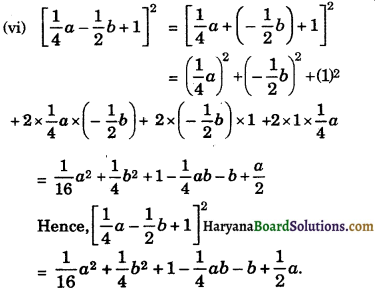
![]()
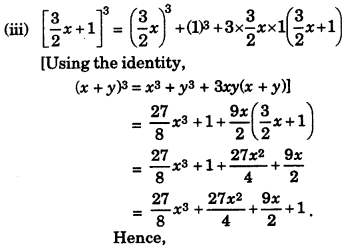
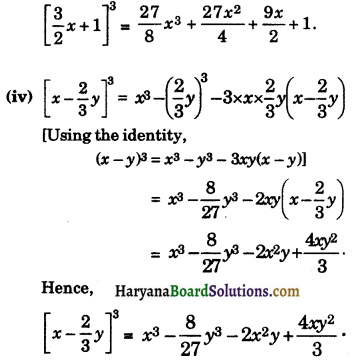
![]()
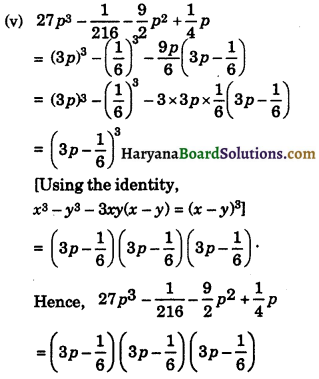
![]()
![]()
![]()

